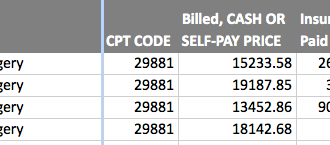
Originally published on MedCityNews.com.
Several dozen Minnesota hospitals and healthcare providers have focused efforts in five distinct areas to drive down avoidable readmissions by 20 percent over the past two years.

Originally published on MedCityNews.com.
Several dozen Minnesota hospitals and healthcare providers have focused efforts in five distinct areas to drive down avoidable readmissions by 20 percent over the past two years.
In Minnesota, nearly one in five Medicare patients is readmitted to a hospital within 30 days. The goal of the Reducing Avoidable Readmissions Effectively (RARE) Campaign was for hospitals to cut avoidable readmissions by 20 percent from their 2009 baseline. According to an announcement today, the campaign has exceeded its goal.
Spearheaded by the Institute for Clinical Systems Improvements, the Minnesota Hospital Association and Stratis Health, the RARE campaign has reported avoiding more than 4,500 preventable hospital readmissions in 2011 and 2012. The campaign has been extended through 2013 with a focus on further engaging community partners beyond hospital walls to prevent an additional 2,000 avoidable readmissions this year.
These are the five key areas the campaign targeted:
Comprehensive discharge planning, or ensuring that the patient’s and the family’s input is considered in a comprehensive discharge plan. One approach taken by St. Luke’s Hospital in Duluth was use of a discharge advocate. In a pilot program, the advocate visited congestive heart failure patients at high risk for readmissions, who were receiving information and instructions from too many different sources. The discharge advocate streamlined that process and began the process of discharge education within the first 24 hours that the patient was admitted to the hospital.
Medication management, or making sure patients understand why they’re taking medication and that they are taking them in the correct manner at the correct time.
Transition care support, or coordinating care between different caregivers. Park Nicollet Methodist Hospital, for example, established a standardized process for making follow-up phone calls to patients 24 to 48 hours after they were discharged to answer questions, review medications and discuss the importance of attending scheduled follow-up appointments. The standardization process included developing evidence-based call questions, training staff to facilitate the calls and identifying patients who would require a follow-up call.
Patient and family engagement, or putting processes that emphasize the status of family caregivers as essential members of the team, and preparing them to help manage care at home.
Transition communications, or boostingcommunication between the sending and receiving caregivers. St. Gertrude’s Health and Rehabilitation Center is one of the facilities that uses a set of tools called INTERACT to improve early identification, assessment, documentation and communication about residents’ health statuses. For example, they would fill out a standardized form after noting a change in a resident’s condition that warranted follow up by an on-call physician or nurse practitioner.
RARE facilitates collaboration between the 83 participating hospitals and 93 community partners through monthly newsletters and recorded webinars. It also provides toolkits and other resources for participants.






